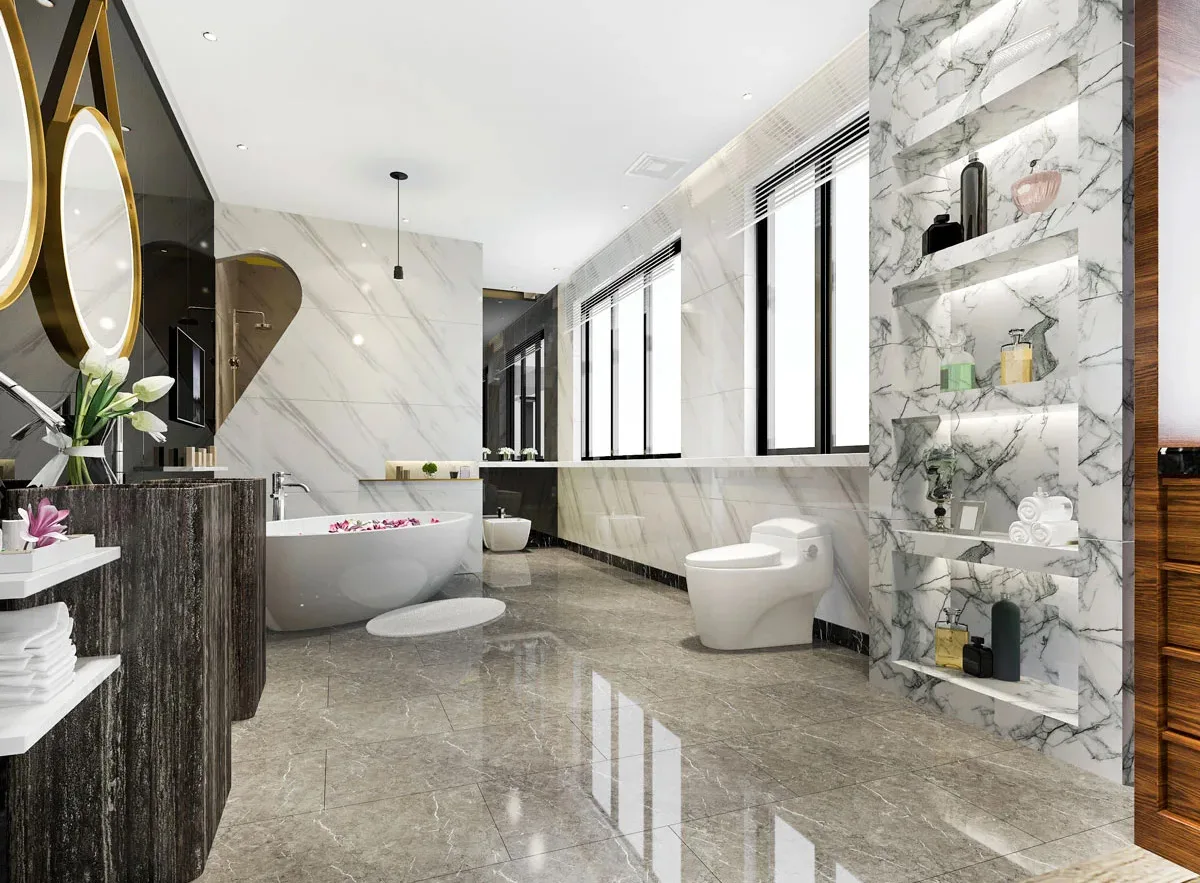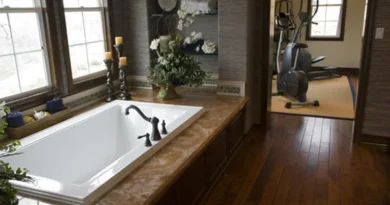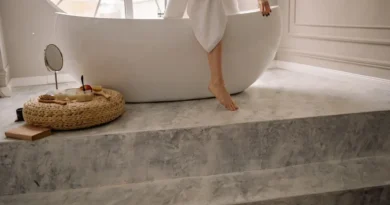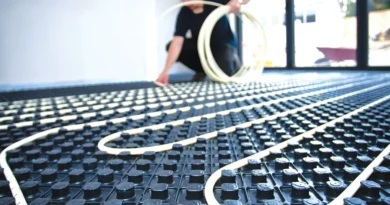Waterproof Bathroom Flooring: Discover Your Best Options for a Stylish Space
The bathroom is every home’s most intimate space, and the kitchen is its heart. Contemporary trends are blurring the lines between living zones, making modern bathrooms and kitchens more open to users and nature. Yet, in home design, they remain unique, demanding special attention to flooring.
Modern Trends in Bathroom and Kitchen Flooring
Today’s trends focus keenly on the home’s heart and intimate areas. Often underrated, these zones deserve careful decoration, yielding significant rewards. Their allure mirrors the home’s spirit, and choosing the right materials ensures safety and meets higher hygiene standards.
In both small and large bathrooms, floor design crucially influences appeal, as floors and walls are the largest surfaces. Safety and hygiene are paramount, given the high humidity in bathrooms and water use in kitchens. Flooring must meet specific needs. While many defaults to ceramic tiles, an adequate choice, they’re not the only option. Modern materials and technologies offer a wide range, making bathroom and kitchen style statements.
Safety is paramount for bathroom floors. The risks of high humidity, water spills, and barefoot walking demand non-slip materials to prevent accidents. Unlike other rooms, bathrooms face extreme humidity, and unsuitable materials can lead to mold and health hazards. It’s essential to use moisture-resistant, easy-to-clean flooring. Avoid covering these areas with carpets, as they don’t dry well in humid conditions and can harbor bacteria.
Ceramic Tiles: A Popular Choice for Waterproof Flooring
Ceramic tiles are popular waterproof materials for good reason. They’re cost-effective, durable, and moisture-resistant. Installation is straightforward, and the variety in colors, patterns, and textures is impressive. However, quality varies, so choose wisely. Less durable tiles can be damaged easily. It’s smart to keep extra tiles for emergencies, allowing easy replacement if one breaks.
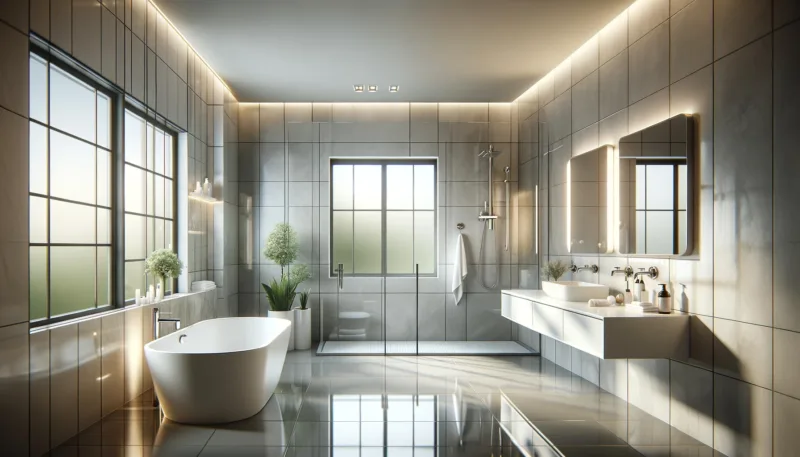
Wood, a favorite for flooring, doesn’t suit moisture-prone areas, as it deteriorates quickly. However, waterproof laminate, suitable for wet areas, prevents water penetration with unique joint technology. This safe, non-slip material resists impacts and scratches and mimics various wood floors while being safe for bathrooms.
Exploring Alternatives: Waterproof Laminate and Vinyl Tiles
Vinyl and glass tiles are also fitting choices. Vinyl tiles, perfect for quick bathroom floor installations, are easy to lay independently. They come in many colors and patterns. The market also offers luxury vinyl planks or tiles, with rotogravure technology enabling natural material imitation, minus drawbacks like coldness or slipperiness.
These tiles comprise several material layers. A fiberglass base topped with vinyl finishes with a designed layer for the final look. A transparent, wear-resistant polyurethane layer adds protection. Ensure a dry, flat, and degreased base for installation.
Glass tiles offer exceptional interior results, especially when matched with other elements like shower cabins or walls. Moisture-resistant and durable, they come in various colors, including recycled glass options. Smaller tile surfaces reduce cracking risks.
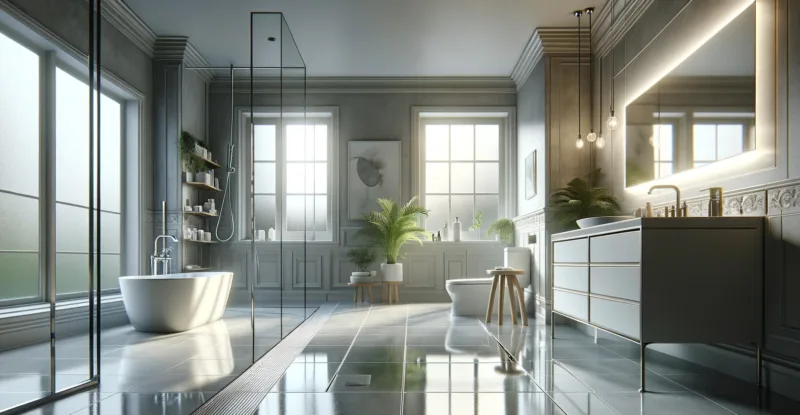
Each material has pros and cons, but modern advancements have enhanced their features. Stone, the priciest waterproof option, adds luxury to the most intimate home spaces. However, it becomes slippery over time and feels cold, requiring a warm covering for a comfortable barefoot experience.
The Role of Rubber Flooring in Modern Kitchen Design
In modern kitchens, rubber is emerging as a popular flooring choice. Available in raw or recycled forms, recycled rubber floors are more affordable and durable. They fit well visually, are easy to install, and feel soft underfoot, important for those who cook frequently. Rubber is also sound-insulating, water and fire-resistant, antibacterial, and available in various colors and patterns.
Though costly, rubber is a worthy investment for substantial kitchen upgrades. Cooking fats can stain it, making rubber tiles a more practical choice than sheets for easier maintenance and replacement, unless aesthetic preferences favor less visible joints in rubber sheets.
